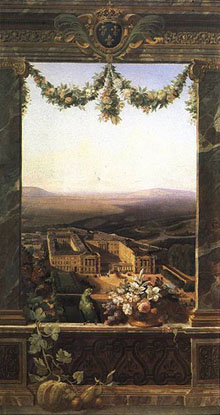Compiègne is a key monument for all First and Second Empire enthusiasts. Its remarkable setting in the heart of the Oise valley, on the edge of a vast forest renowned for its hunting, is the explaination as to why it held a special place in the hearts of all the kings of France. Indeed, it was rather this excellent hunting, and not the fact that the town was a key point in the lines of communication, which over the centuries led to the area becoming one of the principal royal residences. The 18th-century courtier, the Comte de Chevergny, described Louis XV's infatuation with the place in the following words: 'Hunting was his main passion [...] And Compiègne, with its immense forest, with its endless avenues amongst the trees, with its stretches down which you could ride all day and never come to the end, was the ideal place to indulge that passion'. Madame Adélaïde, the King's daughter poured praise upon 'charming Compiègne' which she 'simply adored'.
What is more, Compiègne was the preferred summer residence for the monarchs of France - Louis XIV alone stayed there 75 times - and it soon became a traditional stopping point during coronation ceremonies on the return from Rheims. And although the palace suffered during the Revolution, it was to return to its glory under the Empire when it was transformed into an imperial residence which rivaled both Versailles and Fontainebleau. Just like Napoleon I, Napoleon III too fell under its spell. Indeed Compiègne was to see its swan song during the Second Empire, when it became the official residence of imperial court during the autumn and the stage on which contemporary society was to appear in its entirety during the famous 'Series'. Nor has this cultural and natural heritage been abandoned. Today the town can be visited in many different ways. The present itinerary however takes you on an exclusively imperial journey.
The museums and sites marked in hypertext (that is, which are underlined)take the reader to a detailed file. The headings at the top of the page are to facilitate the organisation of your stay and they provide: an interactive map, practical information, information on where to stay and eat, information on other sites of interest in the region and finally a short bibliography. To follow this itinerary in its entirety, you should set aside a long weekend.
Karine Huguenaud
(October 1996)
| 
No comments:
Post a Comment